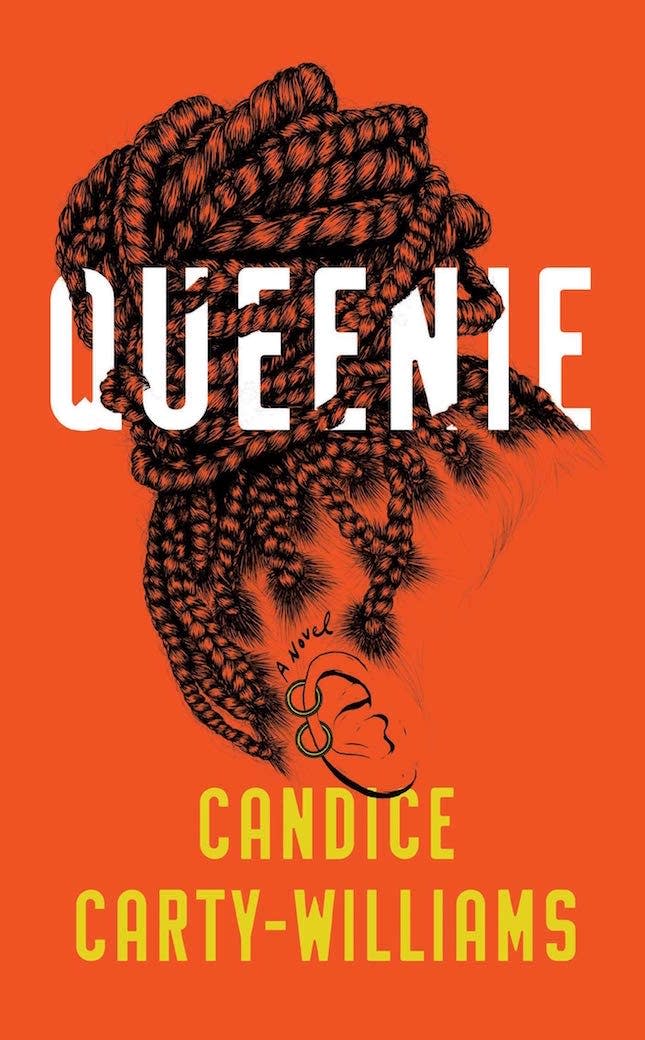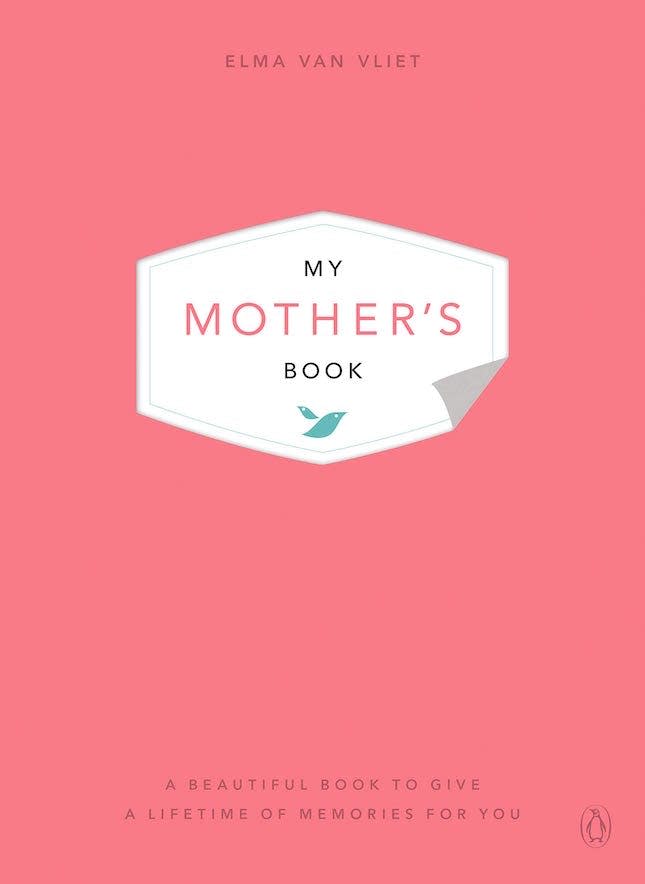3 New Books About Dear Diarists
Whether it was a carefully padlocked childhood book hidden under the bed, a curated, angsty LiveJournal, or a Captain’s Log, most of us have kept a diary at some point. Not only can recording your story be cathartic, but it serves as a permanent record of events that might easily go forgotten otherwise. Looking at our old journals can be cringeworthy, but it can also provide a vital look into who we used to be, and how that person became the person we see in the mirror today. The three new books in this week’s book club feature a Bridget Jones-esque up-to-the-minute chronicle of a dramatic life, a meeting of a present self with a voice from the past, and a diary you can actually give to someone in your life to encourage her to record her story — and how it intertwines with yours.

1. Queenie by Candice Carty-Williams ($26): Hailed as perhaps an even worthier successor to the Bridget Jones mantle, Queenie is a Jamaican Brit who is finding 25 to be a particularly bad year. Her white boyfriend Tom will barely talk to her as he watches her pack her things from their shared apartment; he’s asked her to move out for a trial separation as they sort out their “stuff.” She has to steer through casual (and less-casual) racism and microaggressions on the reg. Her favorite Caribbean bakery in Brixton has been replaced by a trendy burger bar, her Aunt Maggie won’t stop spouting religious judgment, and her abdomen has been wracked by mysterious pains.
“‘Okay,’ she said after a pause and a prod. ‘I’ve asked another doctor for a second opinion. And having had another look, it’s just that—well, is there any chance you were pregnant, Queenie?’ I sat up again; my stomach muscles would be shocked into thinking that I was exercising at this rate. ‘I’m sorry, what do you mean?’ ‘Well,’ the doctor said, peering at the ultrasound, ‘it looks like you’ve had a miscarriage.’ I lifted my hand to my mouth, forgetting that I was holding anything. My phone slipped out of my grip and onto the floor. The doctor paid no attention to my reaction and continued looking at the screen. ‘Why?’ I asked, desperate for her to look at me, to acknowledge that this news might have affected me in some way. ‘It can happen with most forms of contraception,’ she told me clinically, her eyes that I’d previously thought were kind still fixed on the screen. ‘Most women just don’t know about it. At least it’s done the job.’ I lay back on the examination table long after she’d left the room.”
Trying to get over Tom (“that white boy,” according to her chiding but loving grandmother) sends Queenie into a spiral of dating. She painstakingly shares her adventures back on the market, particularly those pitfalls with which interracial dating is fraught. Her trio of friends, the Corgis, have her back — at least, she thinks they all do, but she might be wrong. Queenie’s other mission is to finally get to cover some real, heavy news for her London paper, but her pitches to cover issues like gender-based violence keep getting twisted into demands for articles describing what the activists are wearing. It’s tough to be Queenie, but she remains defiant as she chronicles the year from hell.

2. Memories of the Future by Siri Hustvedt ($27): “I kept a journal that year. I found my hero in it, the homunculus of my traveling thoughts, and I tried out passages for his novel in the notebook. I doodled and drew and recorded at least some of my comings and goings and my conversations with others and with myself, but the black-and-white Mead composition book with its account of my former self disappeared not long after I had filled its pages. And then, three months ago, I found it packed neatly in a box of miscellany my mother had saved. I must have started another journal and left the old one behind me after a visit to my parents in the summer of 1979. When I spotted the slightly-creased-at-one-corner notebook behind a box of loose photographs with the absurd title My New Life handwritten on the cover, I greeted it as if it were a beloved relative I had given up for dead: first the gasp of recognition, then the embrace…the little book of two hundred pages has been invaluable for the simple reason that it has brought back, to one degree or another, what I couldn’t remember or had misremembered in a voice that is at once mine and not quite mine anymore.”
Hustvedt, whose A Woman Looking at Men Looking at Women made it to B+C’s best book bets of 2016, is back at it with her usual panache. In her semi-autobiographical novel, a writer named S.H. is moving her mother between facilities when she finds her journal from 40 years before, when she moved to New York City in 1978 in the hopes of pulling together a great novel during the year before her deferred fellowship at Columbia University was to start. If she failed to complete the book in that time, she would leave the novel behind and immerse herself in the study of literature instead. S.H.’s haul of memories also includes a copy of that year’s unfinished novel, about a Sherlock Holmes-emulating teen detective.
The writing year was tough on S.H., then called Minnesota; she wound up barely staying afloat and dumpster diving for dinner before finding work ghostwriting a socialite’s memoirs. As her year progresses, she becomes more and more intrigued by her neighbor Lucy, whose rants she could hear through the walls, and began to painstakingly record. One night, Lucy storms into her apartment, and an adventure begins. In her semiautobiographical, metafictional collage, S.H. juxtaposes her memories, seasoned with age and hindsight, with the fresh but naïve life chronicled in her journal. The book, which also includes fluid illustrations from the author, acknowledges the journaling year’s importance in how she defined herself. “I didn’t know then what I know now: As I wrote, I was also being written,” she says.

3. My Mother’s Book by Elma van Vliet ($18): Originally published in Dutch, Elma van Vliet’s directed journal is designed to travel from child to parent and back again. When van Vliet’s mother became seriously ill in 2001, her daughter, who thought she would always have more time with her mother, began to worry about how much might go unsaid, and the stories that might be lost. She created a book for her mother that asked the questions she’d always wanted the answers to: Who was her mother as a young woman, what were her proudest moments, and what were her dreams for the future? The book painted a picture of who her mother was, both as someone intimately connected to her daughter, and as an independent person in her own right.
“For all children who receive the completed book: Enjoy reading your mother’s stories. I hope this becomes a true voyage of discovery. About her, then and now, and about everything. A note for Mom: This is your book and your story. Feel free to make it completely your own! You can decide how much and how often you write. Rewrite questions if you’d like to answer them differently. Add pictures you’d like to share. Whatever feels right to you. When you’re done, give the book back to your daughter or son. You’ve just shared a lifetime of you with someone who loves you.”
The questions, which range from silly to serious, progress through being a child and becoming an adult, to questions about her own parents, growing up, love and motherhood, hobbies, travels, thoughts, and hopes. Each chapter closes with an invitation for the writer to share a memory about her child, connected to the theme. It’s a few of your mother’s favorite things, arriving just two months before… yes, Mother’s Day.
RELATED: 3 New Books Told from Two Different Perspectives
Brit + Co may at times use affiliate links to promote products sold by others, but always offers genuine editorial recommendations.


